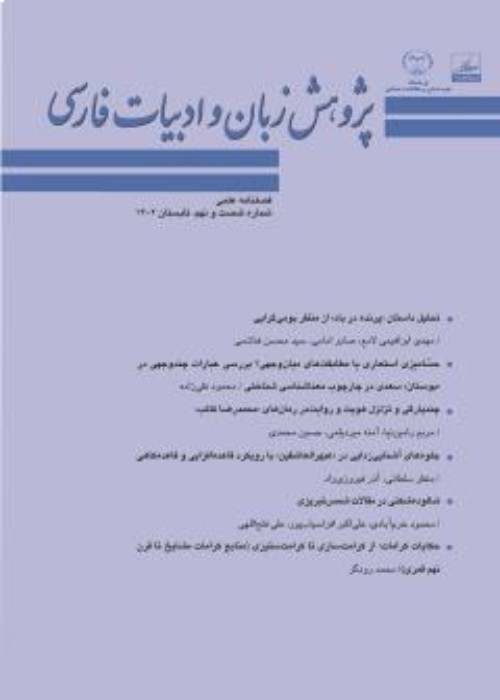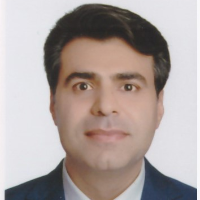A Critical Study of the Validity of Gulestan Based on the Theory of Critical Discourse Analysis
Author(s):
Abstract:
With a discourse analysis approach in the field of linguistic study of literature, the present article queries the distribution of discourse-based structures in Saadi’s Gulestan at the level of phrases, sentences and texts in order to explore the degree of explicitness and implicitness of linguistic features used to express ideas in Gulestan, and to find the mystery of eternality of Sa’di’s speech. Presupposing that taking account of discourse structure can be helpful for understanding and interpreting a text, and relying on the fact that discourse is a meaningful linguistic unit having four features of systematicality, intentionality, objectivity, and being macro-linguistics, here in this article we have applied linguistic aspect of Van Leeuven’s model (1996) to find an answer to the question that what makes a work live on in cultural construction of different generations due to its linguistic features. Hence, after brief review of the relationship between literature and linguistics, we first introduce the subject and the research method. After that, critical discourse analysis and Van Livon’s model are introduced as basic concepts. This is followed by explaining the two categories of explicit and implicit features involved in Van Leeuven’s model. Dividing textual structure of Gulestan into two groups of narrative discourse-based and informative discourse-based structures, we analyze a text from the first chapter of Gulestan. Text analysis shows that in Gulestan the discourse-based features of implicitness such as deletion, passivization, de-personalization, referential and classificatory types are of high frequency in comparison with the features of implicitness. Measuring and explaining the degree of mysteriousness, we conclude that one reason for the eternality of Sa’di’s Gulestan is his use of the discourse-based features of implicitness. (Notice that here we deal with implicitness from a discourse approach not Gnostic and poetic one). This has made it possible for Sa’di to de-contextualize his narratives temporally, spatially, historically, politically; to hide their agents, actors, and patients, so communicate his own message through their speech prominently and effectively, and thereby make his work eternal for all centuries and generations.
Language:
Persian
Published:
Research in Persian Language & Literature, Volume:8 Issue: 1, 2010
Page:
109
magiran.com/p783897
دانلود و مطالعه متن این مقاله با یکی از روشهای زیر امکان پذیر است:
اشتراک شخصی
با عضویت و پرداخت آنلاین حق اشتراک یکساله به مبلغ 1,390,000ريال میتوانید 70 عنوان مطلب دانلود کنید!
اشتراک سازمانی
به کتابخانه دانشگاه یا محل کار خود پیشنهاد کنید تا اشتراک سازمانی این پایگاه را برای دسترسی نامحدود همه کاربران به متن مطالب تهیه نمایند!
توجه!
- حق عضویت دریافتی صرف حمایت از نشریات عضو و نگهداری، تکمیل و توسعه مگیران میشود.
- پرداخت حق اشتراک و دانلود مقالات اجازه بازنشر آن در سایر رسانههای چاپی و دیجیتال را به کاربر نمیدهد.
In order to view content subscription is required
Personal subscription
Subscribe magiran.com for 70 € euros via PayPal and download 70 articles during a year.
Organization subscription
Please contact us to subscribe your university or library for unlimited access!



